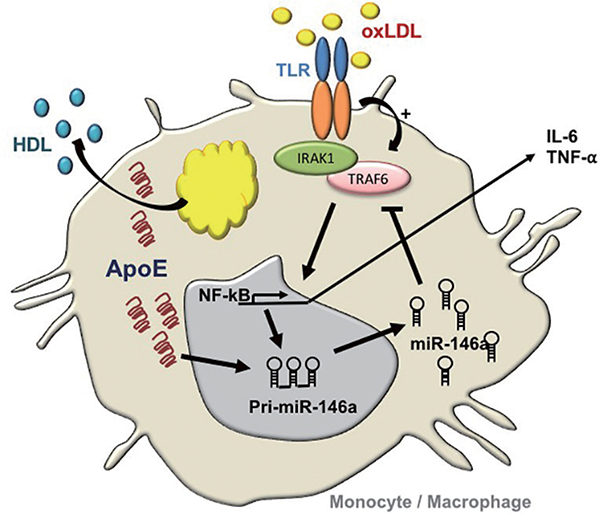Figure 1.

ApoE regulation of myeloid cell activation via microRNA. Environmental ligands of Toll like receptors including oxLDL caused by hyperlipidemia provoke inflammatory signaling in monocytes and macrophages resulting in NF-κΒ activation. Gene transcription from NF-κΒ activity results in the production of inflammatory mediators including pro-atherogenic cytokines. It also results in the production of pri-miR-146a that is subsequently processed to mature miR-146a that silences the expression of key TLR-adaptor molecules IRAK1 and TRAFF6. The production of miR-146a thereby serves as a regulatory feedback loop to suppress NF-κΒ activity and resolve inflammation. Our recent findings have revealed that beyond serving to eliminate pools of cellular lipid levels via plasma HDL, apoE amplifies this regulatory feedback loop by enhancing the biogenesis of miR-146a (13).
